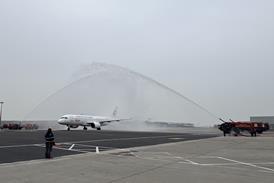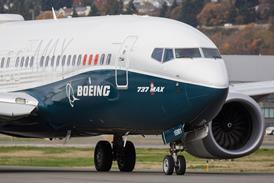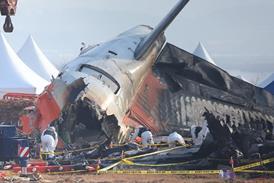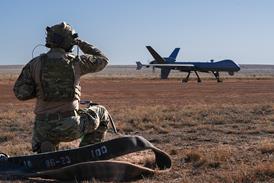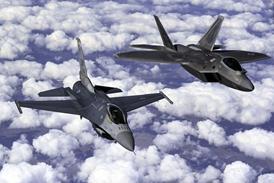Honeywell is using the Paris air show to launch a new approach and landing safety product that works by extending the capabilities of its enhanced ground proximity warning system (EGPWS). It provides pilots on any kind of approach with appropriate visual and audible advice if the approach is unstable at less than 1,000ft (300m) above airfield elevation.
The avionics manufacturer says the rationale for designing a system like this is to reduce the risk of runway overruns following unstabilised approaches that cause badly executed landings. Runway overruns are the most common of all aircraft accidents, and they tend to be costly even if most events are not fatal. Honeywell estimates the cost of overrun incidents to the US industry alone has been $900 million over the past 10 years.
EGPWS, a terrain awareness and warning system (TAWS), is already installed in thousands of jet and turboprop commercial air transport aircraft operating all over the world. Honeywell's new product, dubbed SmartLanding, is an EGPWS software extension. The Honeywell TAWS itself is based on the marriage of precise satellite navigation with a terrain database containing detailed airport and runway data, so the system is capable of monitoring, in three dimensions, the position of the aircraft relative to any given runway. It is able to provide stabilised approach guidance on visual, non-precision or precision approaches, and is independent of ground-based navigation aids, says Honeywell.
The system operates during the final part of the approach, from 1,000ft above airfield elevation, where the aircraft should be stablilised on the correct approach angle, lateral path and at the correct airspeed. SmartLanding does not provide any input if the aircraft is accurately following the approach profile and speeds, but it provides the pilot with alerts - visual and voice - if it is above or below the correct approach angle, left or right of the lateral approach path toward the runway, and too fast or slow.
The aural warnings would be triggered between 1,000ft above airfield level and 450ft, and would take the form of a voice alert saying, for example, "too high, too high". This would be repeated in script on the navigation display. If the aircraft is still not meeting all the parameters for a stabilised approach when it reaches 450ft, the system generates an alert saying "unstable, unstable".
If the aircraft touches down beyond the touchdown zone, the system generates a "long landing" alert, and then provides a audible countdown of the runway distance to go, in thousands of feet: for example "3,000ft remaining". This is a function of Honeywell's existing runway awareness and advisory system (RAAS), also an EGPWS-generated capability.
SmartLanding also has the capability to compare the barometric altitude with the GPS altitude measured by the EGPWS, thus detecting altimeter setting errors. The voiced alert is "altimeter setting", and this would be delivered on approach or departure at heights up to 5,000ft above airfield elevation while the aircraft is less than 20nm from the nearest airfield.
Honeywell says the system is available now, and does not need special certification because it is an advisory device based on the tried and tested EGPWS functionality. The company says that the list price of the SmartLanding capability as an additional component in its own right the would be $25,000, but most anticipated orders would come from those who were adding the new capability as part of a system update, making the real price lower.
- All the latest news, images and video from the Paris Air Show
Source: Flight Daily News

